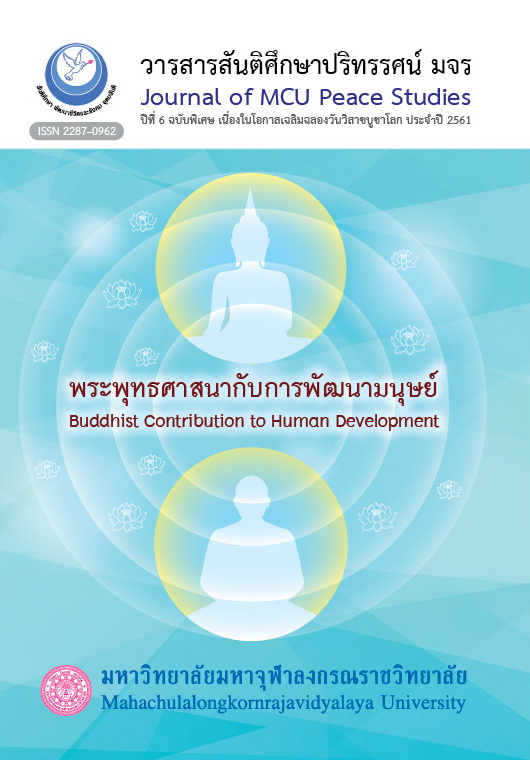The Pali Study in Sukkhothai Kingdom
Main Article Content
บทคัดย่อ
The objectives of this thematic paper entitled “The Pali Study in Sukhothai
Kingdom” are: 1) to study the Pali study and 2) to analyze Pali literatures in Sukhothai
Kingdom.
As the result, firstly, the Pali study in Sukhothai kingdom was focused in studying
Buddhism based on the Tipitaka (the Pali Canon). Buddhism in Sukhothai kingdom had
been influenced by Sri Lankan Buddhism called “Lankavamsa” which was introduced to
the kingdom by Sri Lanka monks who were invited by King Ramkhamhaeng.
Secondly, the educational centers were located in the monasteries and palaces
where the monasteries were provided for the children of the public taught by monks while
the palaces for royal children taught by royal scholars.
Finally, by way of sending monks to study in Sri Lanka and inviting Sri Lanka to
teach in the kingdom under the royal patronage, it glorified Buddhist education.
In Sukhothai kingdom, Pali studies or Tipitaka studies was well promoted and
supported by the king. The monks who passed the Tipitaka studies were specially praised
and promoted by the king. Furthermore, the king himself was a specialist in Buddhism and
ordained a monk for sometimes. The palace were allowed to be the Buddhist educational
center for monks and novices. King Lithai (one king of Sukkhothai kingdom) had composed
a famous book named “Tebhumikatha” (The three worlds) in which many Pali texts like
the Tipitaka and later scriptures were referred showing the king’s ability and knowledge in
Buddhism. It can be said that Pali studies in Sukhothai Kingdom was very popular and
advanced mainly under the royal patronage.
Article Details
ทัศนะและความคิดเห็นที่ปรากฏในบทความในวารสาร ถือเป็นความรับผิดชอบของผู้เขียนบทความนั้น และไม่ถือเป็นทัศนะและความรับผิดชอบของกองบรรณาธิการ ยินยอมว่าบทความเป็นลิขสิทธิ์ของวารสาร


